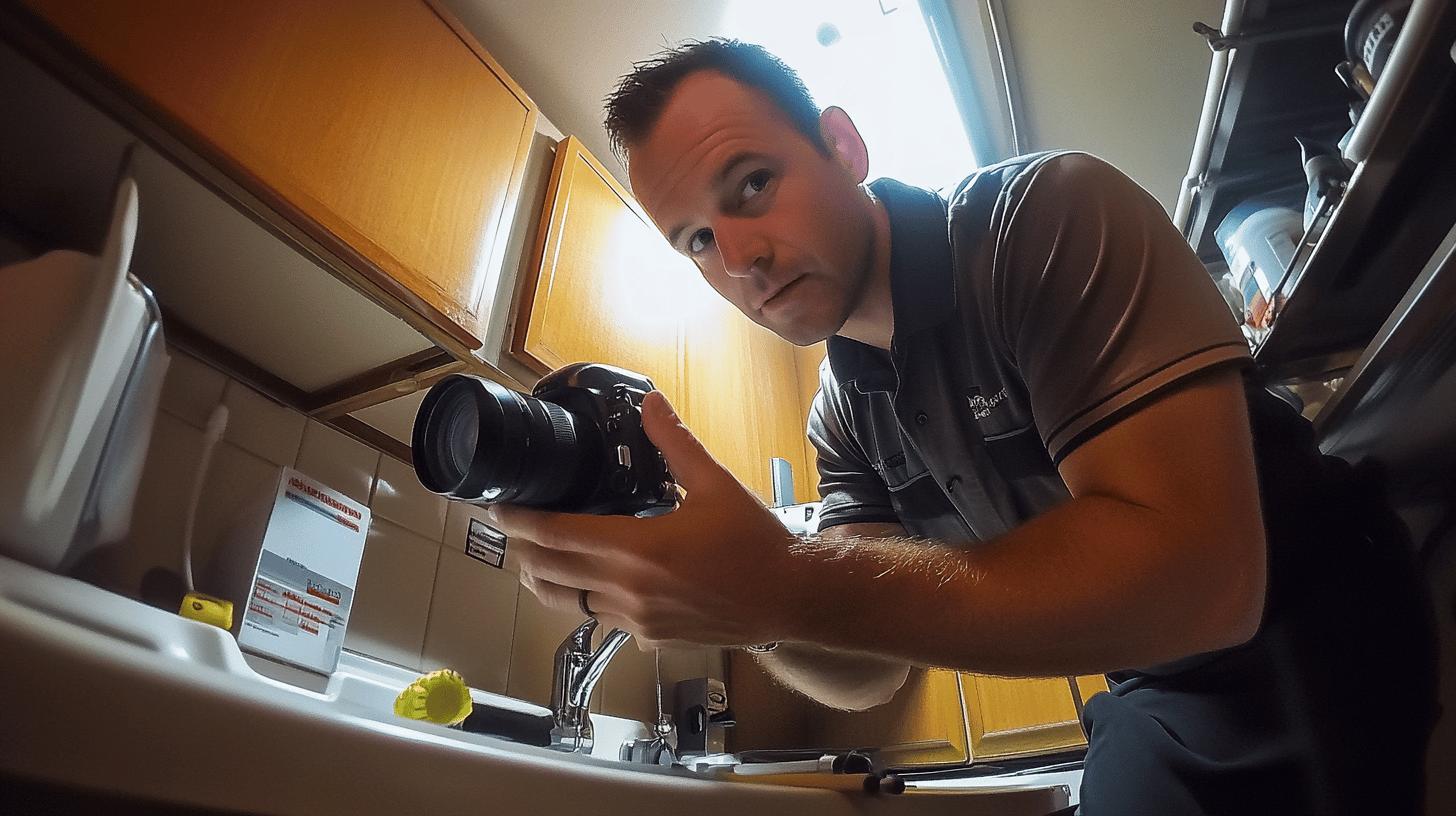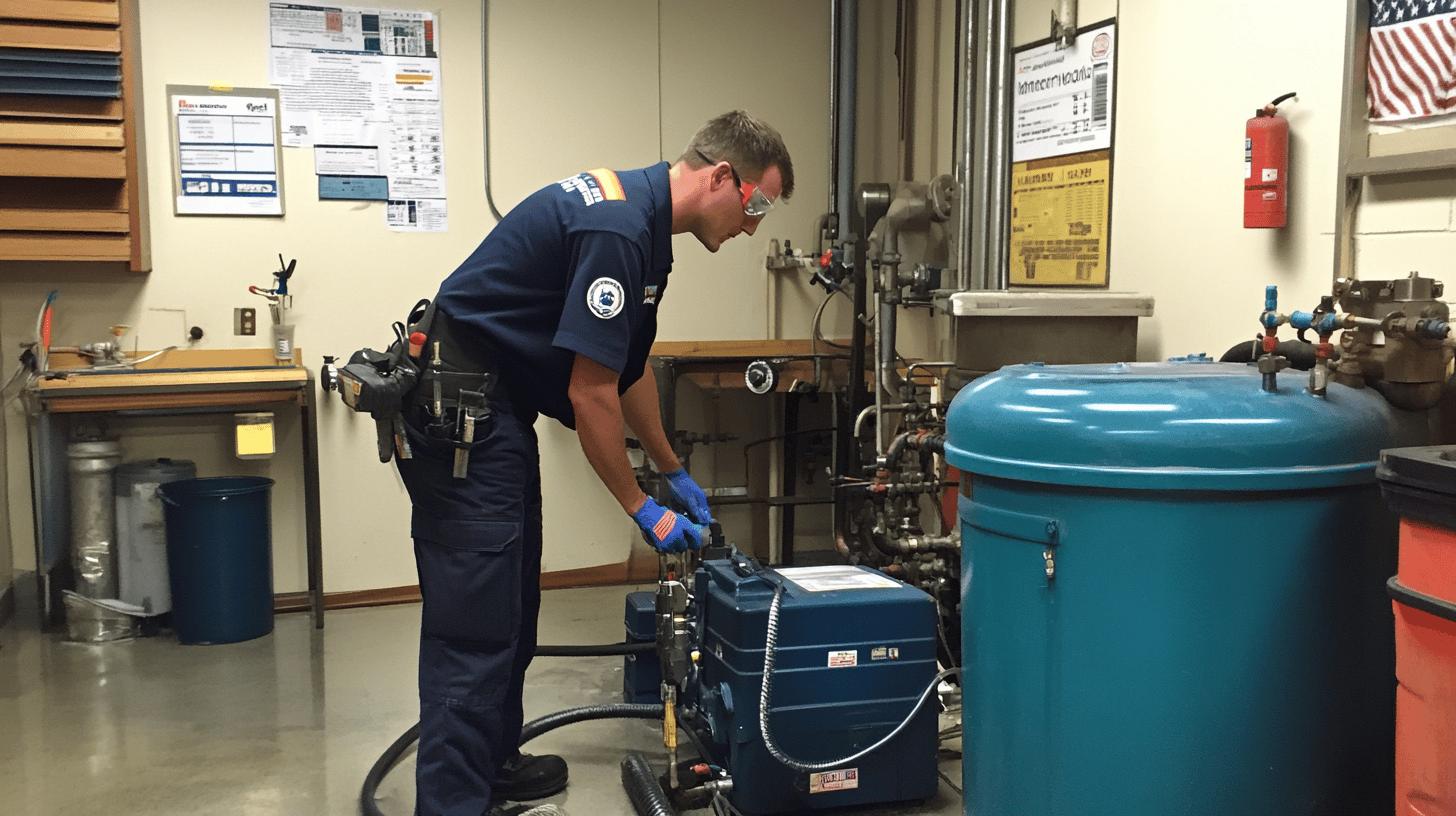TL;DR:
- Hydro jetting uses high-pressure water (3,500-4,000 PSI) to clear plumbing clogs.
- It’s eco-friendly and can thoroughly clean pipes without harsh chemicals.
- Suitable for PVC, copper, and steel pipes; not recommended for older or fragile pipes.
- Camera inspections are essential before hydro jetting to assess pipe integrity.
- Professionals ensure safe operation, adjust pressure based on pipe condition, and prevent damage.
- Hydro jetting effectively manages stubborn clogs, removes tree roots, and descaling.
- Snaking is gentler for older pipes but less effective for complex blockages.
- Hiring professional plumbers ensures effective and safe hydro jetting.
Is hydro jetting bad for pipes, or is it the superhero of plumbing cleaning? This question has sparked debates among homeowners and plumbing experts alike. In a world where clogged pipes can disrupt daily life, understanding the impact of hydro jetting is essential. This technique uses high-pressure water to effectively clear stubborn blockages, but its safety for different pipe materials is still a topic of interest. This article will explore how hydro jetting works, its effects on various pipes, and how to make informed decisions about your plumbing maintenance.
Understanding Hydro Jetting and Its Impact on Pipes
Hydro jetting uses high-pressure water, usually between 3,500 and 4,000 PSI, to clear clogs and blockages in plumbing systems. This method involves portable equipment with a pressurized nozzle and hose, often combined with a camera to check the condition of the pipes. It relies solely on water, avoiding harsh chemicals and making it eco-friendly. Hydro jetting is thorough, effectively clearing tough blockages and cleaning pipe walls.
For safety, hydro jetting works well with most pipe materials like PVC, copper, and steel. However, it may not be safe for older or fragile pipes, as the pressure could cause damage. In these cases, other cleaning methods are better to prevent harm.
Before starting hydro jetting, it’s essential to assess the condition of the pipes to avoid damage. Camera inspections can help determine pipe integrity and any pre-existing issues, ensuring hydro jetting is appropriate and minimizing risk. Consulting a professional plumber is a smart move to guarantee a safe and effective process.
| Pipe Material | Suitability for Hydro Jetting |
|—————|——————————-|
| PVC | Suitable |
| Copper | Suitable |
| Steel | Suitable |
Potential Risks and Pipe Safety with Hydro Jetting

Is hydro jetting harmful to pipes? It’s generally safe but can damage older or compromised pipes. High-pressure water, typically between 3,500 and 4,000 PSI, might crack or break fragile pipes. A camera inspection before hydro jetting helps assess pipe condition and integrity, identifying vulnerabilities to prevent damage.
Professional plumbers play a key role in ensuring pipe safety during hydro jetting. They have the expertise to operate the equipment correctly, reducing the risk of improper handling. Professionals can also determine which pipes can handle hydro jetting and adjust pressure settings as needed. Hiring professional services protects your plumbing and gives you peace of mind, ensuring the process is done safely and effectively.
- Conduct regular inspections to assess pipe health.
- Use camera inspections before hydro jetting.
- Adjust pressure settings based on pipe material and age.
- Avoid hydro jetting on damaged or aging pipes.
- Hire experienced professionals for hydro jetting.
Comparing Hydro Jetting to Traditional Pipe Cleaning Methods
Hydro jetting is great for thoroughly cleaning pipes with high-pressure water. It efficiently removes tough clogs and cleans the pipe walls, which traditional methods might struggle with. This process not only clears blockages but also prevents future ones by getting rid of buildup. It’s effective for descaling pipes and removing roots, helping to maintain a clear plumbing system.
When you compare hydro jetting to snaking, you’ll notice some distinct differences in how they work and their results. Snaking uses a cable with a cutting blade to break up clogs. It’s effective for simple blockages but not as good with compacted debris or roots. Hydro jetting is much more thorough and can tackle complex plumbing issues. However, snaking is gentler on older pipes, making it a better choice if you’re worried about pipe integrity.
Choosing the right method depends on your plumbing system’s needs and conditions. Hydro jetting is ideal for strong pipes that can handle high pressure, making it great for recurring clogs, root invasions, and descaling. Snaking is better for older or fragile pipes with simple blockages.
- Managing stubborn or recurring clogs
- Removing tree roots from sewer lines
- Descaling pipes for efficiency
- Clearing extensive blockages
Professional Hydro Jetting Services and Their Importance

Is hiring a professional plumber necessary for hydro jetting? Absolutely! It ensures the process is safe and effective. Professionals know how to handle high-pressure water without causing damage to your pipes. They thoroughly assess your plumbing system beforehand, figuring out the right pressure settings based on the condition and material of your pipes. This approach helps prevent any mishaps and keeps your plumbing infrastructure safe.
So, why should you hire qualified plumbers for hydro jetting? Their expertise comes with many benefits. They skillfully handle specialized equipment, ensuring a complete clean without risking pipe integrity. They can spot potential issues and take preventative measures to reduce future plumbing problems. By trusting experienced professionals, you not only get effective cleaning but also peace of mind knowing your plumbing system is in good hands.
- Expertise with high-pressure equipment
- Ability to assess and ensure pipe safety
- Prevention of long-term plumbing issues through expert advice
Final Words
Exploring hydro jetting shows how effective it is at thoroughly cleaning pipes and preventing stubborn blockages. While it’s generally safe for materials like PVC and copper, older or more fragile pipes might not handle high pressure well, making a thorough pre-inspection essential.
So, is hydro jetting bad for pipes? It really depends on the condition of the pipes and whether skilled professionals handle the job. When done right, hydro jetting is a much better option than traditional cleaning methods, helping to maintain the longevity and efficiency of your plumbing.
Opt for expert services for a worry-free experience and keep your plumbing systems running smoothly.
FAQ
Is hydro jetting bad for pipes in California?
Hydro jetting is generally safe for most pipes like PVC, copper, and steel, but older, fragile pipes might be at risk. It’s important to assess pipe conditions before proceeding.
Can hydro jetting damage pipes?
Hydro jetting could potentially damage older or compromised pipes, leading to cracks or breaks. A professional plumber should always perform an inspection before starting the process.
Is hydro jetting better than snaking?
Hydro jetting is often more effective than snaking for removing stubborn clogs and preventing future blockages. It’s particularly useful for eliminating roots and descaling pipes.
Is hydro jetting worth it?
If done correctly, hydro jetting can be a highly effective pipe cleaning method, offering thorough and long-lasting results compared to traditional cleaning methods.
Is hydro jetting safe for cast iron pipes?
Hydro jetting is typically safe for cast iron pipes. However, an expert assessment is critical to ensure that these pipes are not already weakened or compromised.
How does the hydro jetting process work?
Hydro jetting uses high-pressure water, typically between 3,500 to 4,000 PSI, to clear clogs and obstructions. The process involves a pressurized nozzle, hose, and often a camera for inspection.
What are the potential risks of hydro jetting?
Hydro jetting risks include potential damage to compromised pipes. It’s crucial to carry out a pre-inspection and employ experienced professionals to minimize the likelihood of mishandling.
Why should professional services be used for hydro jetting?
Professional services ensure effective hydro jetting, leveraging expertise and proper equipment use. Experts can prevent damage and provide a thorough cleaning outcome.
What situations are best suited for hydro jetting?
Hydro jetting is ideal for situations involving stubborn blockages, root removal, routine maintenance, and descaling pipes.

